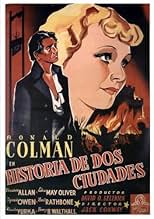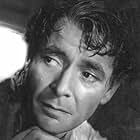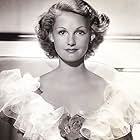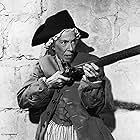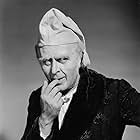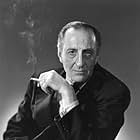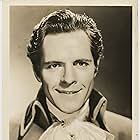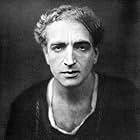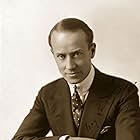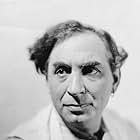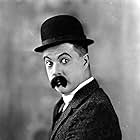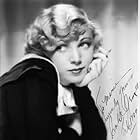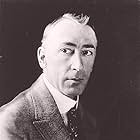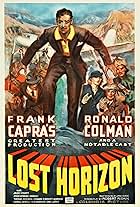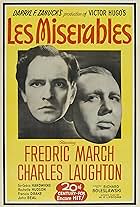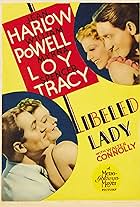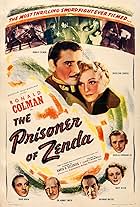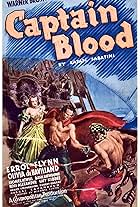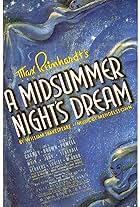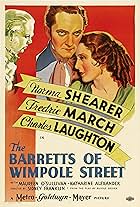IMDb RATING
7.8/10
6.5K
YOUR RATING
A pair of lookalikes, one a former French aristocrat and the other an alcoholic English lawyer, fall in love with the same woman amidst the turmoil of the French Revolution.A pair of lookalikes, one a former French aristocrat and the other an alcoholic English lawyer, fall in love with the same woman amidst the turmoil of the French Revolution.A pair of lookalikes, one a former French aristocrat and the other an alcoholic English lawyer, fall in love with the same woman amidst the turmoil of the French Revolution.
- Nominated for 2 Oscars
- 2 nominations total
Lucille La Verne
- The Vengeance
- (as Lucille LaVerne)
Storyline
Did you know
- TriviaActor Ronald Colman agreed to play the role of Sydney Carton with the sole condition that he not also be required to play the role of Charles Darnay, as was usually expected in adaptations of the Dickens novel. The plot of 'A Tale of Two Cities' turns on the physical resemblance between the two characters. Colman had long wanted to play Sydney Carton, and was even willing to shave off his beloved mustache to play the part.
- GoofsSydney Carton attends Christmas Eve services ca. 1780 during which "Hark, the Herald Angels Sing" is sung to music by Felix Mendelssohn (1809-1847), and John Francis Wade's Latin hymn, "Adeste fideles," is sung in Frederick Oakley's (1802-1880) translation as "O Come, All Ye Faithful."
- Quotes
Sydney Carton: It's a far, far better thing I do than I have ever done. It's a far, far better rest I go to than I have ever known.
- Crazy creditsAlthough the film has nothing to do with Christmas, "Adeste Fideles," known in English as the holiday carol "O Come All Ye Faithful" plays as a The End title appears on screen.
- ConnectionsEdited into The Story That Couldn't Be Printed (1939)
- SoundtracksLa Marseillaise
(1792) (uncredited)
Written by Claude Joseph Rouget de Lisle
Played during the opening credits and often in the score
Featured review
Perhaps best known for Ronald Colman's signature performance as Sidney Carton, this excellent adaptation of Dickens's "A Tale of Two Cities" also has a lot of other strengths to offer. Colman is joined by the likes of Edna May Oliver and Basil Rathbone in a fine cast that brings the characters to life. The story itself is filled with good scenes, ranging from the exciting Bastille scene to courtroom showdowns to important confrontations between the characters.
The novel contains a lot more material than would ever fit into a normal-length movie, and the screenplay does a good job of selecting sequences that fit together and that work well on the screen. While differing in places from the original, it preserves the most important themes and ideas. The French Revolution is an interesting and multi-layered subject, and a good number of high-quality classic films are set in the period. The Dickens novel, in particular, lends itself readily to a cinema adaptation.
The role of Sidney Carton is almost an actor's dream, an unlikely hero who has to battle his own limitations as well as the situation around him. Colman's classic style does full justice to the role, making the character fully sympathetic without pretending that he is something he is not, and without drawing attention away from the overall themes and focus of the story. Most present-day actors would be far too self-absorbed to play the role as it should be played.
Almost everything in this version is satisfying and enjoyable. It combines plenty of drama with some good lighter moments and period detail, almost all of it done with skill. Colman himself clinches it with his memorable portrayal of a challenging and interesting character.
The novel contains a lot more material than would ever fit into a normal-length movie, and the screenplay does a good job of selecting sequences that fit together and that work well on the screen. While differing in places from the original, it preserves the most important themes and ideas. The French Revolution is an interesting and multi-layered subject, and a good number of high-quality classic films are set in the period. The Dickens novel, in particular, lends itself readily to a cinema adaptation.
The role of Sidney Carton is almost an actor's dream, an unlikely hero who has to battle his own limitations as well as the situation around him. Colman's classic style does full justice to the role, making the character fully sympathetic without pretending that he is something he is not, and without drawing attention away from the overall themes and focus of the story. Most present-day actors would be far too self-absorbed to play the role as it should be played.
Almost everything in this version is satisfying and enjoyable. It combines plenty of drama with some good lighter moments and period detail, almost all of it done with skill. Colman himself clinches it with his memorable portrayal of a challenging and interesting character.
- Snow Leopard
- Oct 28, 2004
- Permalink
- How long is A Tale of Two Cities?Powered by Alexa
Details
- Release date
- Country of origin
- Official sites
- Language
- Also known as
- Charles Dickens' 'A Tale of Two Cities'
- Filming locations
- Metro-Goldwyn-Mayer Studios - 10202 W. Washington Blvd., Culver City, California, USA(Studio, Waterfront Street)
- Production company
- See more company credits at IMDbPro
Box office
- Budget
- $1,232,000 (estimated)
- Runtime2 hours 8 minutes
- Color
- Aspect ratio
- 1.37 : 1
Contribute to this page
Suggest an edit or add missing content









